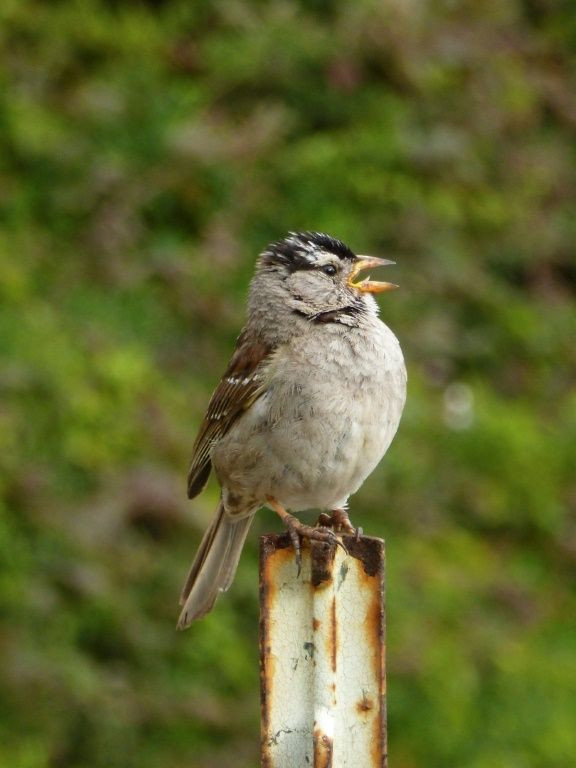Sparrows Chirped Sexier During San Francisco COVID-19 Lockdown
KEY POINTS
- Sparrows hit lower notes to make their sound more attractive to potential mates
- Song pattern was never heard before the COVID-19 lockdown
- COVID-19 lockdown also reduced noise pollution to levels never seen since 1954
Female white-crowned sparrow frequently seen at the Golden Gate Bridge made their songs more attractive to their counterparts by belting out lower notes as COVID-19 lockdown was imposed across the San Francisco Bay Area. The birds were said to have improved their vocal performance by producing songs at lower amplitudes as they enjoyed the quietness of the surrounding during the lockdown.
Even if the female sparrows hit lower notes, they sang loudly to charm their potential mates. The altered vocal prowess was never heard before the pandemic, according to a study published in the journal Science.
Elizabeth Derryberry, an associate professor at the Department of Ecology and Evolutionary Biology of The University of Tennessee, Knoxville, has been studying birdsongs for more than a decade. When San Francisco was placed under a lockdown, she saw a picture of the Golden Gate Bridge devoid of any human activity. Her passion for studying birdsongs kicked-in and felt the urge to observe what the quietness meant for the birds.
Derryberry, together with an ecologist and assistant professor of biology at George Mason University, David Luther, has been studying noise and its impact on birds since 2012. They aim to find the correlation of noise pollution on the sparrows. To do this, they recorded bird sounds from both urban and rural areas across the San Francisco Bay Area.
Derryberry and Luther are therefore in possession of recordings from April through June of 2016 which they compared to newly recorded audios taken in the same area from April to May 2020 by a fellow researcher. With the recordings, Derryberry and her colleagues were able to compare what the sparrows sounded before the pandemic and during the COVID-19 lockdown.
Additionally, the team observed that the COVID-19 lockdown dramatically cut the noise pollution in the area by as much as 50%. The reduced vehicle traffic and noise during the lockdown were not seen since 1954. People also appreciate the sounds of the birds which they can hear louder now that the noise pollution subsided.
“COVID-19 has been devastating in many ways for our society,” Derryberry said the university's news release. “The loss of human life alone is overwhelming. It’s a testament to people though that there are still bright spots amid such loss. One of those bright spots has been how much more people are noticing birds, particularly in cities, around the world.”

© Copyright IBTimes 2025. All rights reserved.





















